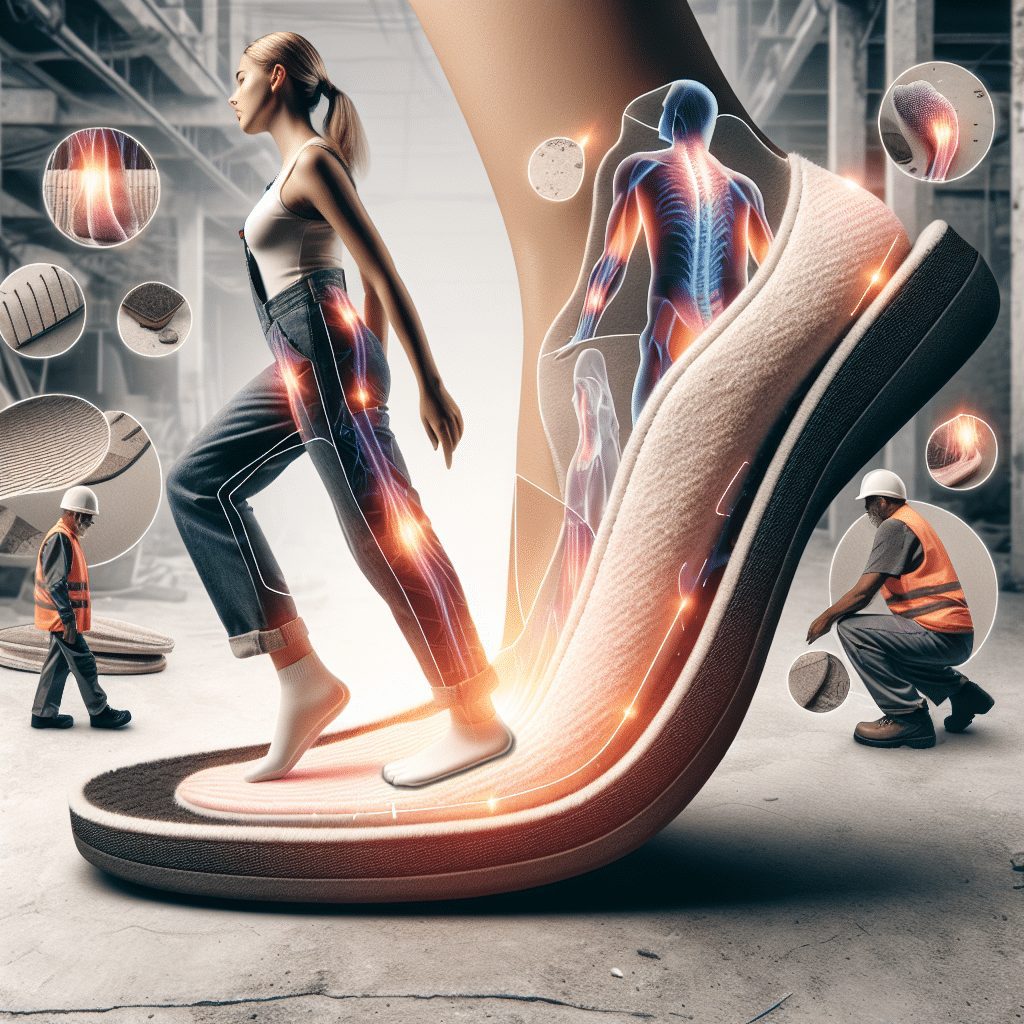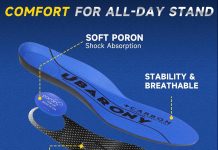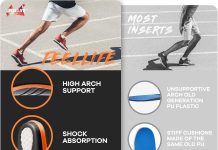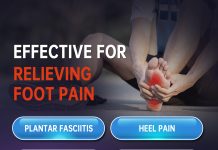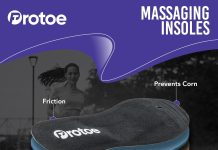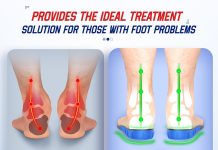Imagine walking on a hard concrete floor all day, feeling the impact with each step. Now picture slipping on a pair of insoles and suddenly feeling a comforting cushion beneath your feet. Insoles are designed to provide support and cushioning, particularly for those who spend extended periods of time on hard surfaces. But have you ever wondered how exactly these magical inserts work their wonders? Let’s take a closer look at the science behind how insoles provide that much-needed extra support and comfort for concrete or hard floors.
Introduction
Concrete or hard floors can be unforgiving on the feet, causing discomfort, fatigue, and even pain. The importance of cushioning for these types of surfaces cannot be overstated. Thankfully, insoles offer a simple yet effective solution to this problem. In this article, we will delve into the world of insoles, exploring their definition, different types available, material composition, cushioning technology, anatomy, and the numerous benefits they offer for individuals who regularly walk or stand on concrete or hard floors.
What are insoles?
Insoles, also known as shoe inserts or footbeds, are removable inserts that fit inside the shoe to provide additional support, comfort, and cushioning. They can be made from a variety of materials and come in different shapes and sizes to cater to different foot types and shoe styles.
The primary purpose of insoles is to enhance the shoe’s ability to absorb shock, reduce pressure points, and provide support to the arch and heel, thereby minimizing the impact on the feet and lower limbs.
Material Composition of Insoles
Insoles are constructed using various materials, each with its unique properties and benefits. Some commonly used materials include foam, gel, cork, and leather.
Foam is one of the most popular materials due to its lightweight and shock-absorbing qualities. It provides excellent cushioning and molds to the shape of the foot, offering personalized comfort. Gel insoles, on the other hand, use a gel-like substance that provides exceptional shock absorption and distributes pressure evenly across the foot.
Cork is a natural material known for its durability and moisture-wicking properties. It provides both support and cushioning, making it an excellent choice for individuals who require arch support. Leather insoles offer a luxurious feel while providing cushioning and moisture management.
Cushioning Technology in Insoles
Insoles incorporate various cushioning technologies to maximize comfort and support. These technologies are designed to absorb impact and reduce stress on the feet and lower limbs.
One common cushioning technology is air cushioning, which utilizes pockets of air within the insole to provide a soft and responsive feel. Another popular technology is foam cushioning, which absorbs and disperses shock, providing a comfortable and stable base for the foot.
Additionally, some insoles feature innovative materials such as memory foam, which conforms to the shape of the foot and provides personalized cushioning. Others utilize specialized materials that offer energy return, propelling the foot forward and reducing fatigue.
Each cushioning technology has its advantages and disadvantages. Air cushioning, for example, may provide excellent shock absorption but can be prone to leakage over time. Foam cushioning, on the other hand, offers consistent support but may lose its shape and effectiveness over prolonged use. It is important to consider individual needs and preferences when selecting the right cushioning technology.
Anatomy of Insoles
Understanding the anatomy of insoles can shed light on how they provide cushioning and support. Insoles typically consist of several layers, each serving a specific purpose.
The top cover, or the uppermost layer of the insole, plays a crucial role in cushioning and comfort. It is often made from materials like fabric or foam, which provide a soft and breathable surface for the foot.
The midsole is the middle layer and is responsible for shock absorption and support. It is usually made from foam or gel materials that cushion the foot and distribute pressure evenly.
Arch support, located in the arch area of the insole, is vital for individuals with flat feet or high arches. It helps maintain proper foot alignment and provides additional cushioning and support where needed.
The bottom layer, also known as the outsole, is in direct contact with the ground. It is typically made from rubber or other durable materials that offer traction and protect the insole from wear and tear.
Benefits of Using Insoles for Concrete or Hard Floors
Using insoles on concrete or hard floors can bring about numerous benefits, including:
Reduced impact on joints and bones
The cushioning provided by insoles helps absorb shock and reduces the impact on joints and bones. This is particularly beneficial for individuals who spend long hours on their feet or engage in high-impact activities.
Enhanced shock absorption
Insoles with proper cushioning technology significantly enhance shock absorption, reducing stress on the feet and lower limbs. This can help prevent discomfort, pain, and potential injuries associated with walking or standing on hard surfaces.
Improved comfort and support
Insoles offer an extra layer of comfort and support by evenly distributing pressure and relieving hotspots. They help alleviate fatigue and provide a more comfortable experience, especially for those with pre-existing foot conditions.
Prevention of foot fatigue and pain
Walking or standing on concrete or hard floors for extended periods can cause foot fatigue and pain. Insoles cushion the feet and provide support, reducing the strain on muscles and preventing fatigue and pain.
Protection against common foot conditions
The cushioning provided by insoles can help prevent and alleviate common foot conditions such as plantar fasciitis, metatarsalgia, and heel spurs. They offer additional support to areas prone to strain and inflammation, reducing the risk of developing these conditions.
Choosing the Right Insoles for Concrete or Hard Floors
When selecting insoles for concrete or hard floors, several factors should be taken into consideration:
Consideration of foot type and arch support needs
Different individuals have different foot types and arch heights. It is important to choose insoles that provide the appropriate level of arch support and cater to specific foot conditions or foot types (such as flat feet or high arches) to ensure optimum cushioning and support.
Evaluation of cushioning and shock absorption capabilities
The cushioning and shock absorption capabilities of insoles vary depending on the materials used and the cushioning technology employed. Consider the level of impact you anticipate and select insoles that offer adequate cushioning to accommodate your needs.
Material selection based on durability and breathability
Insoles should be constructed using durable materials that can withstand regular use on hard surfaces. Additionally, consider the breathability of the material to ensure proper airflow and moisture management to prevent odor and discomfort.
Fit and size considerations
Insoles should fit properly within the shoe, without causing any discomfort or altering the fit of the shoe. Consider the size of the insole and choose one that matches the shoe size to maximize the benefits of cushioning and support.
Maintenance and Care of Insoles
To prolong the effectiveness and lifespan of insoles, it is important to properly maintain and care for them. Here are some tips:
Cleaning methods for insoles
Insoles should be regularly cleaned to remove dirt, sweat, and odor. Depending on the material, they can be hand washed, machine washed (in a delicate cycle), or wiped clean with a damp cloth. Allow them to air dry completely before placing them back in the shoes.
Duration of insole effectiveness
Insoles generally last for a certain period before the cushioning and support begin to deteriorate. The lifespan can vary depending on usage and materials. It is recommended to replace insoles every six months to a year, or when signs of wear and tear become apparent.
Replacing worn-out or damaged insoles
If insoles show signs of significant wear or damage, it is important to replace them promptly. Continued use of worn-out insoles may compromise their ability to provide adequate cushioning and support, potentially leading to discomfort and foot problems.
Tips for Using Insoles Effectively
To maximize the benefits of insoles on concrete or hard floors, consider the following tips:
Proper shoe fitting with insoles
Ensure that the shoes used with insoles are the correct size and provide enough room for both the foot and the inserted insole. A proper fit ensures that the insole functions optimally and does not cause discomfort or alter the shoe’s fit.
Gradual adaptation to wearing insoles
When starting to use insoles, it is advisable to gradually increase the duration of wear. This allows the feet and body to adjust to the new support and cushioning provided by the insoles.
Realigning foot posture with insoles
Insoles can help correct foot posture and alignment issues. Pay attention to how the insoles affect your gait and posture, and make necessary adjustments to ensure proper alignment and support.
Rotating between different pairs of insoles
Having multiple pairs of insoles can be beneficial, especially if you regularly engage in activities of varying impact levels. By rotating between different pairs, you can provide your feet with the appropriate cushioning and support for the specific activity or surface.
Conclusion
Insoles play a crucial role in providing cushioning and support for individuals who regularly walk or stand on concrete or hard floors. By absorbing impact, distributing pressure, and offering additional support, insoles can significantly reduce discomfort, fatigue, and the risk of foot problems. When choosing insoles, consider factors such as foot type, cushioning technology, durability, and size to ensure the best fit and maximum benefits. With proper maintenance and care, insoles can provide lasting comfort and support, enhancing your overall well-being on hard surfaces.


